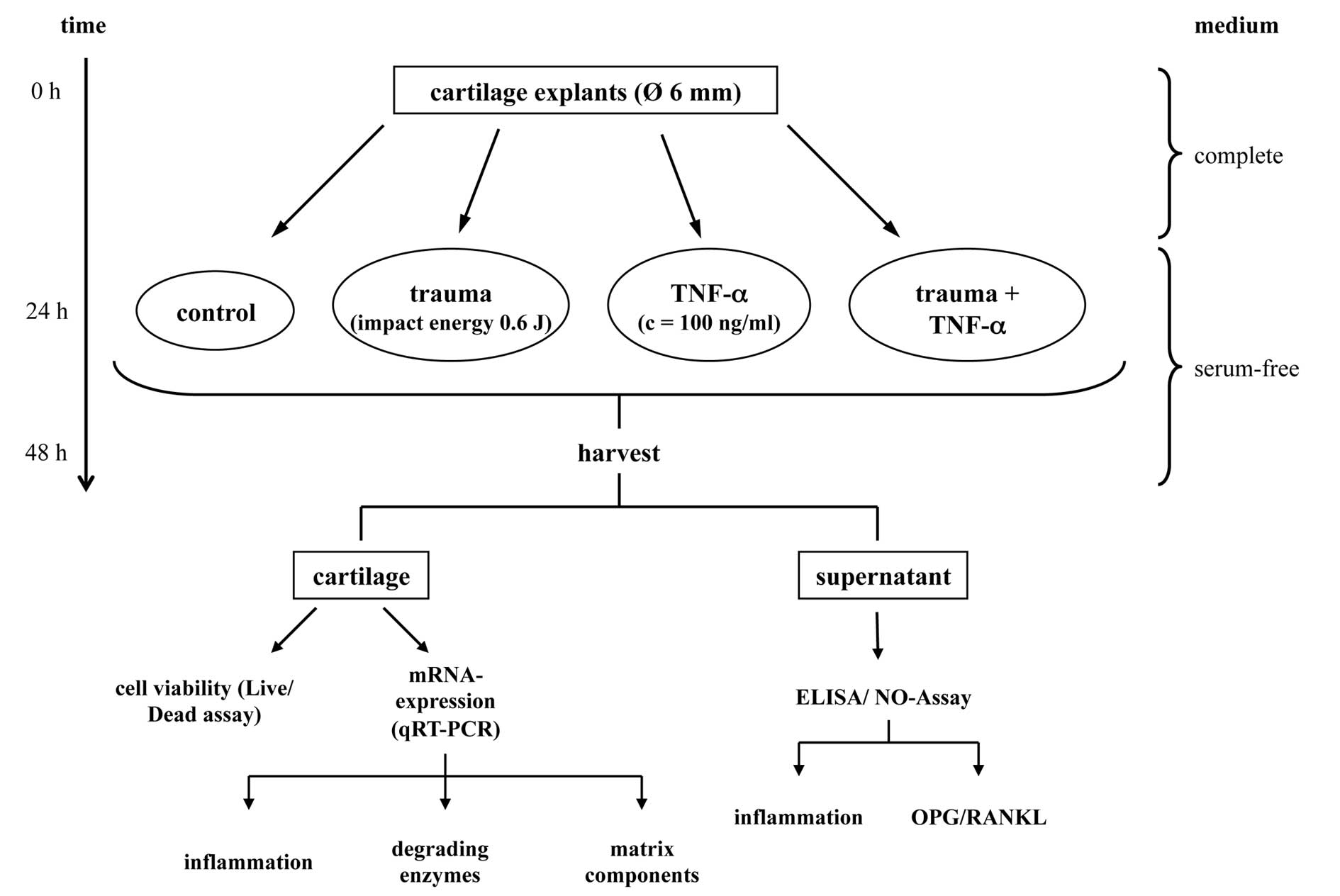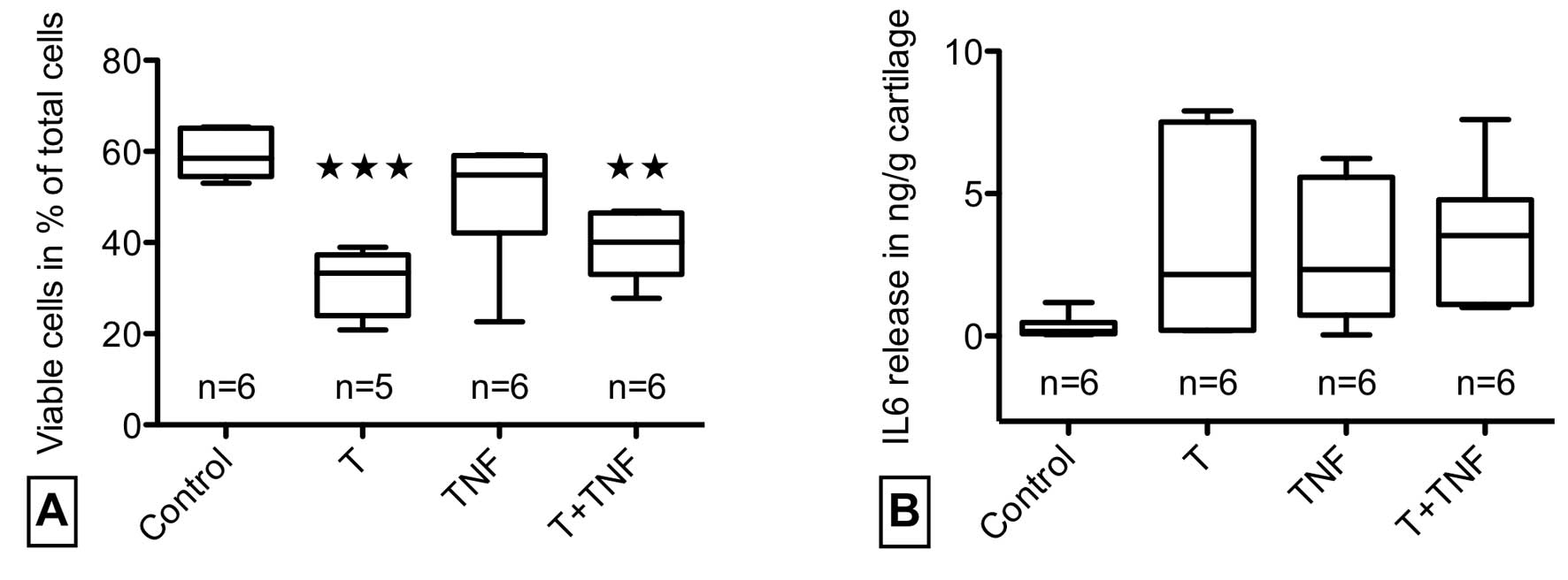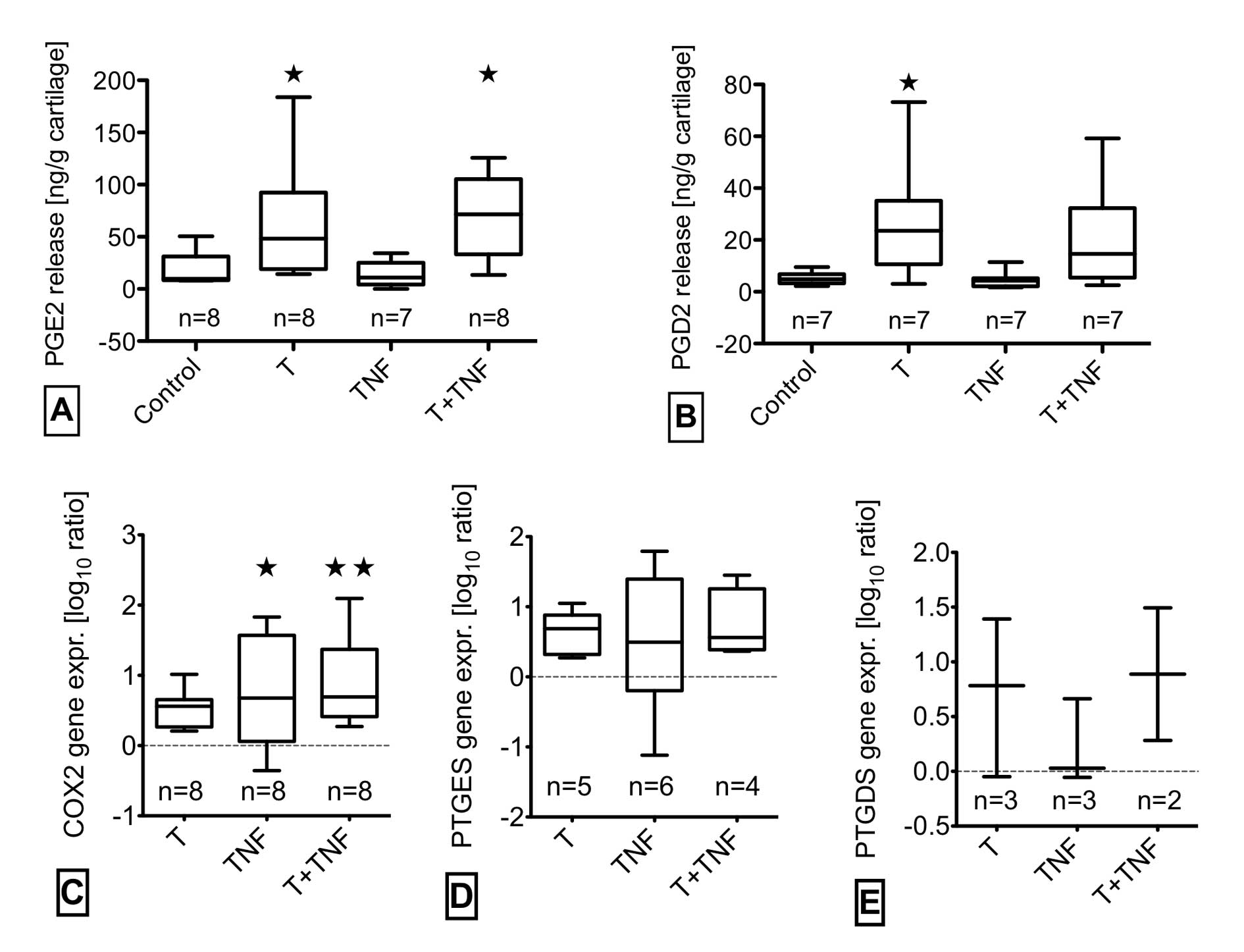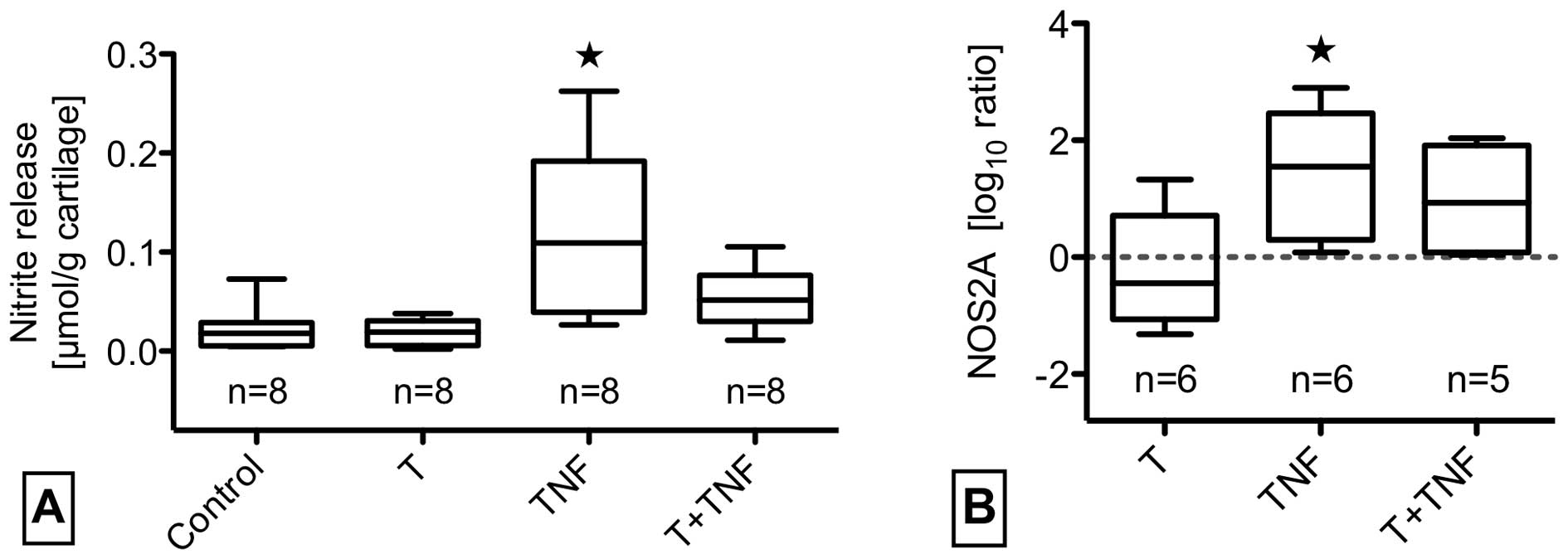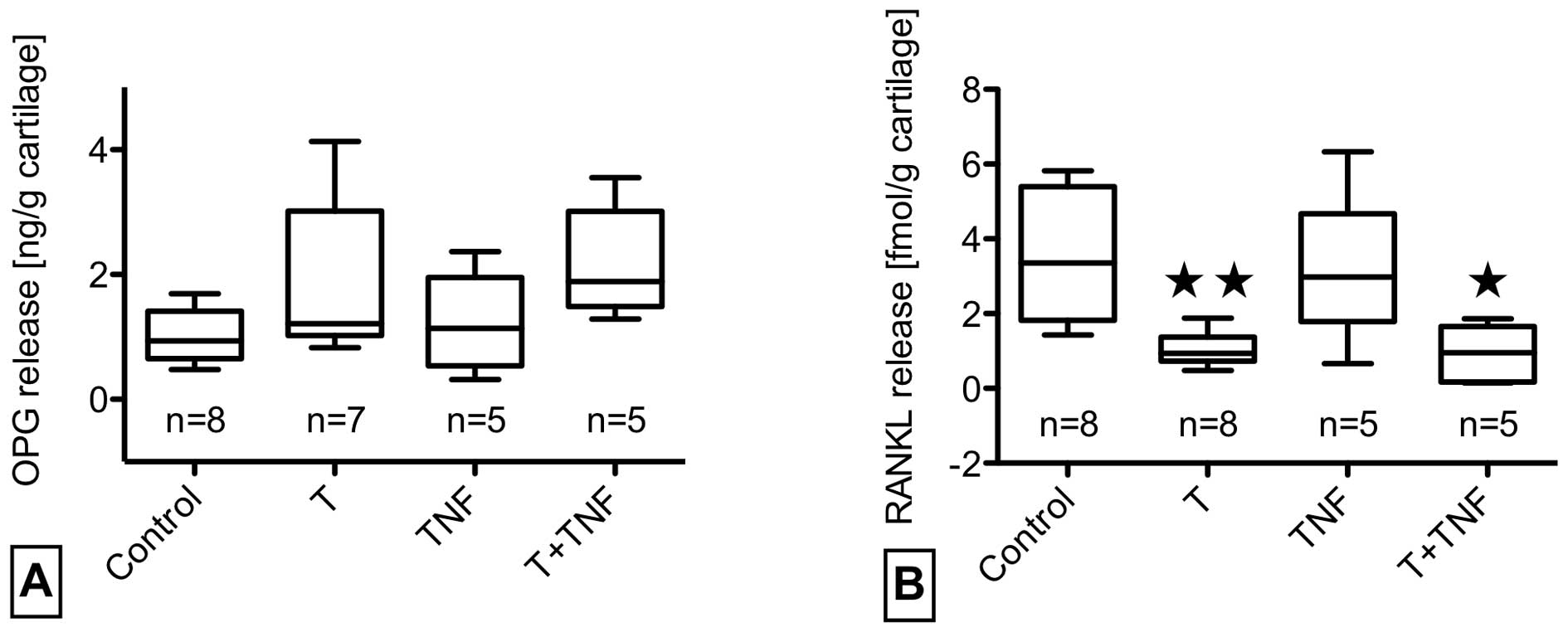|
1.
|
M SzczodryCH CoyleSJ KramerP SmolinskiCR
ChuProgressive chondrocyte death after impact injury indicates a
need for chondroprotective therapyAm J Sports
Med3723182322200910.1177/036354650934884019864505
|
|
2.
|
M MajewskiS HabeltK SteinbrückEpidemiology
of athletic knee injuries: A 10-year
studyKnee13184188200616603363
|
|
3.
|
P BakerI ReadingC CooperD CoggonKnee
disorders in the general population and their relation to
occupationOccup Environ
Med60794797200310.1136/oem.60.10.79414504371
|
|
4.
|
M WestinM AlricssonS WernerInjury profile
of competitive alpine skiers: a five-year cohort studyKnee Surg
Sports Traumatol Arthrosc2011751181201222349602
|
|
5.
|
JT LawrenceJ BirminghamAP TothEmerging
ideas: prevention of posttraumatic arthritis through interleukin-1
and tumor necrosis factor-alpha inhibitionClin Orthop Relat
Res46935223526201110.1007/s11999-010-1699-4
|
|
6.
|
DM PhillipsRC HautThe use of a non-ionic
surfactant (P188) to save chondrocytes from necrosis following
impact loading of chondral explantsJ Orthop
Res2211351142200410.1016/j.orthres.2004.02.00215304290
|
|
7.
|
DD D’LimaS HashimotoPC ChenCW ColwellMK
LotzHuman chondrocyte apoptosis in response to mechanical
injuryOsteoarthritis Cartilage9712719200124939082
|
|
8.
|
MA DiMiccoP PatwariPN SiparskyMechanisms
and kinetics of glycosaminoglycan release following in vitro
cartilage injuryArthritis
Rheum50840848200410.1002/art.2010115022326
|
|
9.
|
A AroenS LokenS HeirArticular cartilage
lesions in 993 consecutive knee arthroscopiesAm J Sports
Med32211215200410.1177/036354650325934514754746
|
|
10.
|
Z TangL YangY WangContributions of
different intraarticular tissues to the acute phase elevation of
synovial fluid MMP-2 following rat ACL ruptureJ Orthop
Res27243248200910.1002/jor.2076318846548
|
|
11.
|
K IrieE UchiyamaH IwasoIntraarticular
inflammatory cytokines in acute anterior cruciate ligament injured
kneeKnee109396200310.1016/S0968-0160(02)00083-212649034
|
|
12.
|
MB GoldringKB MarcuCartilage homeostasis
in health and rheumatic diseasesArthritis Res
Ther11224200910.1186/ar259219519926
|
|
13.
|
F De CeuninckL DassencourtP AnractThe
inflammatory side of human chondrocytes unveiled by antibody
microarraysBiochem Biophys Res Commun323960969200415381094
|
|
14.
|
JC FernandesJ Martel-PelletierJP
PelletierThe role of cytokines in osteoarthritis
pathophysiologyBiorheology39237246200212082286
|
|
15.
|
AL StevensJS WishnokFM WhiteAJ
GrodzinskySR TannenbaumMechanical injury and cytokines cause loss
of cartilage integrity and upregulate proteins associated with
catabolism, immunity, inflammation, and repairMol Cell
Proteomics814751489200910.1074/mcp.M800181-MCP20019196708
|
|
16.
|
K DemircanS HirohataK NishidaADAMTS-9 is
synergistically induced by interleukin-1beta and tumor necrosis
factor alpha in OUMS-27 chondrosarcoma cells and in human
chondrocytesArthritis
Rheum5214511460200510.1002/art.2101015880812
|
|
17.
|
P PatwariMN CookMA DiMiccoProteoglycan
degradation after injurious compression of bovine and human
articular cartilage in vitro: interaction with exogenous
cytokinesArthritis Rheum4812921301200310.1002/art.10892
|
|
18.
|
Y SuiJH LeeMA DiMiccoMechanical injury
potentiates proteoglycan catabolism induced by interleukin-6 with
soluble interleukin-6 receptor and tumor necrosis factor alpha in
immature bovine and adult human articular cartilageArthritis
Rheum6029852996200910.1002/art.24857
|
|
19.
|
H JoosC HogrefeL RiegerL DurselenA
IgnatiusRE BrennerSingle impact trauma in human early-stage
osteoarthritic cartilage: Implication of prostaglandin D2 but no
additive effect of IL-1beta on cell survivalInt J Mol
Med282712772011
|
|
20.
|
H KimWS SongTNF-alpha-mediated apoptosis
in chondrocytes sensitized by MG132 or actinomycin DBiochem Biophys
Res Commun295937944200210.1016/S0006-291X(02)00789-112127985
|
|
21.
|
MJ López-ArmadaB CaramésM
Lires-DeánCytokines, tumor necrosis factor-alpha and
interleukin-1beta, differentially regulate apoptosis in
osteoarthritis cultured human chondrocytesOsteoarthritis
Cartilage14660669200616492401
|
|
22.
|
MB GoldringSR GoldringOsteoarthritisJ Cell
Physiol213626634200710.1002/jcp.2125817786965
|
|
23.
|
D UmlaufS FrankT PapJ BertrandCartilage
biology, pathology, and repairCell Mol Life
Sci6741974211201010.1007/s00018-010-0498-020734104
|
|
24.
|
AE KearnsS KhoslaPJ KostenuikReceptor
activator of nuclear factor kappaB ligand and osteoprotegerin
regulation of bone remodeling in health and diseaseEndocr
Rev29155192200810.1210/er.2007-001418057140
|
|
25.
|
H KomuroT OleeK KühnThe
osteoprotegerin/receptor activator of nuclear factor
kappaB/receptor activator of nuclear factor kappaB ligand system in
cartilageArthritis
Rheum4427682776200110.1002/1529-0131(200112)44:12%3C2768::AID-ART464%3E3.0.CO;2-I11762937
|
|
26.
|
F YoshimuraH KannoM UzukiK TajimaT
ShimamuraT SawaiDownregulation of inhibitor of apoptosis proteins
in apoptotic human chondrocytes treated with tumor necrosis
factor-alpha and actinomycin DOsteoarthritis
Cartilage14435441200610.1016/j.joca.2005.11.00316368252
|
|
27.
|
JE JeffreyRM AspdenCyclooxygenase
inhibition lowers prostaglandin E2 release from articular cartilage
and reduces apoptosis but not proteoglycan degradation following an
impact load in vitroArthritis Res Ther9R129200710.1186/ar2346
|
|
28.
|
DD D’LimaS HashimotoPC ChenCW ColwellMK
LotzImpact of mechanical trauma on matrix and cellsClin Orthop
Relat ResSuppl 391S90S99200111603728
|
|
29.
|
BA FischerS MundleAA ColeTumor necrosis
factor-alpha induced DNA cleavage in human articular chondrocytes
may involve multiple endonucleolytic activities during
apoptosisMicrosc Res
Tech50236242200010.1002/1097-0029(20000801)50:3%3C236::AID-JEMT7%3E3.0.CO;2-E
|
|
30.
|
CM ShipmanPI CroucherOsteoprotegerin is a
soluble decoy receptor for tumor necrosis factor-related
apoptosis-inducing ligand/Apo2 ligand and can function as a
paracrine survival factor for human myeloma cellsCancer
Res639129162003
|
|
31.
|
I PettersenY FigenschauE OlsenW BakkelundB
SmedsrodB SveinbjornssonTumor necrosis factor-related
apoptosis-inducing ligand induces apoptosis in human articular
chondrocytes in vitroBiochem Biophys Res
Commun296671676200210.1016/S0006-291X(02)00916-6
|
|
32.
|
AR AminM AtturSB AbramsonNitric oxide
synthase and cyclooxygenases: distribution, regulation, and
intervention in arthritisCurr Opin
Rheumatol11202209199910.1097/00002281-199905000-0000910328580
|
|
33.
|
F GuilakB FermorFJ KeefeThe role of
biomechanics and inflammation in cartilage injury and repairClin
Orthop Relat
Res4231726200410.1097/01.blo.0000131233.83640.9115232421
|
|
34.
|
P MarottaL SautebinM Di RosaModulation of
the induction of nitric oxide synthase by eicosanoids in the murine
macrophage cell line J774Br J
Pharmacol107640641199210.1111/j.1476-5381.1992.tb14499.x1282071
|
|
35.
|
S Kwan TatN AmiableJP PelletierModulation
of OPG, RANK and RANKL by human chondrocytes and their implication
during osteoarthritisRheumatology
(Oxford)4814821490200919762475
|
|
36.
|
J Moreno-RubioG Herrero-BeaumontL TardioMA
Alvarez-SoriaR LargoNonsteroidal antiinflammatory drugs and
prostaglandin E(2) modulate the synthesis of osteoprotegerin and
RANKL in the cartilage of patients with severe knee
osteoarthritisArthritis
Rheum62478488201010.1002/art.2720420112374
|
|
37.
|
J DeschnerE WypasekM FerrettiB RathM
AnghelinaS AgarwalRegulation of RANKL by biomechanical loading in
fibrochondrocytes of meniscusJ
Biomech3917961803200610.1016/j.jbiomech.2005.05.03416038916
|
|
38.
|
L KrejaA LiedertS HasniL ClaesA
IgnatiusMechanical regulation of osteoclastic genes in human
osteoblastsBiochem Biophys Res
Commun368582587200810.1016/j.bbrc.2008.01.10618243138
|
|
39.
|
MD SternlichtZ WerbHow matrix
metalloproteinases regulate cell behaviorAnnu Rev Cell Dev
Biol17463516200110.1146/annurev.cellbio.17.1.46311687497
|
|
40.
|
A StruglicsM HanssonLS LohmanderHuman
aggrecanase generated synovial fluid fragment levels are elevated
directly after knee injuries due to proteolysis both in the inter
globular and chondroitin sulfate domainsOsteoarthritis
Cartilage1910471057201110.1016/j.joca.2011.05.006
|
|
41.
|
H RoosT AdalberthL DahlbergLS
LohmanderOsteo-arthritis of the knee after injury to the anterior
cruciate ligament or meniscus: the influence of time and
ageOsteoarthritis
Cartilage3261267199510.1016/S1063-4584(05)80017-28689461
|
|
42.
|
EM SchneiderW DuJ FiedlerThe (−765
G->C) promoter variant of the COX-2/PTGS2 gene is associated
with a lower risk for end-stage hip and knee osteoarthritisAnn
Rheum Dis70145814602010
|
|
43.
|
TC Van der Pouw KraanFA van GaalenPV
KasperkovitzRheumatoid arthritis is a heterogeneous disease:
evidence for differences in the activation of the STAT-1 pathway
between rheumatoid tissuesArthritis Rheum4821322145200312905466
|
|
44.
|
L DingE HeyingN NicholsonMechanical impact
induces cartilage degradation via mitogen activated protein
kinasesOsteoarthritis
Cartilage1815091517201010.1016/j.joca.2010.08.01420813194
|
|
45.
|
W GoodwinD McCabeE SauterRotenone prevents
impact-induced chondrocyte deathJ Orthop
Res2810571063201020108345
|
|
46.
|
K TakebeT NishiyamaS HayashiRegulation of
p38 MAPK phosphorylation inhibits chondrocyte apoptosis in response
to heat stress or mechanical stressInt J Mol
Med27329335201121181091
|
|
47.
|
J RadonsAK BosserhoffS GraesselW FalkTEO
Schubertp38MAPK mediates IL-1-induced down-regulation of aggrecan
gene expression in human chondrocytesInt J Mol
Med17661668200616525725
|



